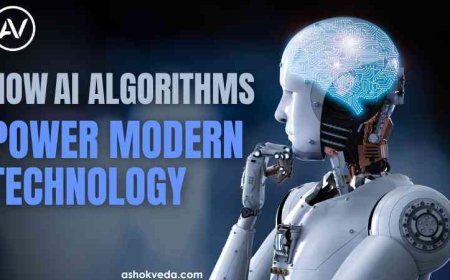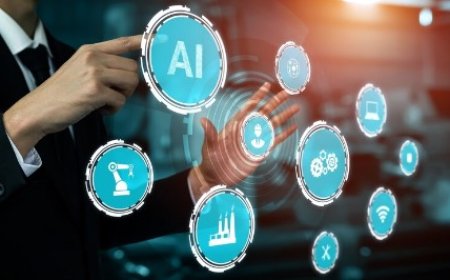Examining the Use of Machine Learning in Art and Design
Discover machine learning, art, design, creativity, algorithms, applications, techniques, innovation, tools, projects, and AI. Enhance artistic processes.

The advent of machine learning algorithms has ushered in a new era of artistic expression, challenging conventional notions of creativity. We examine the evolution of AI-generated art, from early experiments to sophisticated neural networks capable of producing captivating visual and auditory creations. This section sets the stage for understanding the significance of AI in the field of creativity.
Creative Collaboration: Humans and Machines
As AI becomes a co-creator in the artistic process, a complex interplay between human intuition and machine algorithms unfolds. This section explores instances of collaborative projects, where artists and AI systems work hand in hand to produce innovative pieces. We delve into the challenges and opportunities posed by this collaboration, questioning the boundaries of authorship and creativity.
With AI algorithms capable of generating art, questions arise about their impact on traditional artistic processes. How does the integration of machine learning tools influence the role of artists? We explore how artists adapt to this technological shift, examining the ways in which AI augments, challenges, or redefines established creative methods.
The advent of AI algorithms capable of autonomously generating art marks a profound shift in the traditional paradigms of creativity. As machines begin to delve into artistic expression domains, the flexibility between human ingenuity and artificial intelligence comes to the forefront, necessitating an exploration of their impact on established artistic processes.
Central Question:
Amidst this technological surge, a pivotal question arises: What is the true impact of these machine-learning tools on traditional artistic processes? This central inquiry propels us into an in-depth examination of the evolving role of artists and the intricate dance between human creativity and machine-generated art.
Profound Exploration:
This central question initiates a profound exploration, prompting us to delve into the very essence of artistic creation. It encourages a nuanced understanding of the changing flexibility within the creative environment and the potential transformations that AI may introduce.
Adaptation of Creatives:
The introduction of AI necessitates a fundamental shift in the way artists approach their craft. Creatives find themselves in the throes of adaptation, compelled to reassess their methodologies, embrace new tools, and redefine the boundaries of their artistic expression.
Challenges and Opportunities:
The integration of AI presents both challenges and opportunities for artists. Challenges arise as artists grapple with the redefinition of their roles and the potential dilution of the human touch in the artistic process. Simultaneously, opportunities emerge as AI becomes a collaborator, introducing novel techniques and expanding the horizons of creative possibilities.
Digital Canvas and Traditional Boundaries:
The canvas, once confined to physical spaces, now extends into the digital space. This shift challenges traditional boundaries and invites artists to interplay between physical and digital mediums, pushing the limits of what is considered conventional in the art world.
Human Intuition vs. Machine Precision:
The interaction between human intuition and machine precision becomes a focal point. Artists navigate the delicate balance between the instinctual, emotive aspects of their craft and the algorithmic precision offered by AI, resulting in a synthesis that is both challenging and transformative.
Dance of Creativity and Algorithms:
In this ever-changing scenery, creativity engages in a dance with algorithms and neural networks. Artists, as choreographers of this unique performance, experiment with the fusion of human and machine capabilities, creating a harmonious interplay that challenges preconceived notions of artistic creation.
Multifaceted Adaptation:
The adaptation of artists to the AI-driven era is multifaceted. Questions of authorship, originality, and the harmonization of human touch with machine-generated elements become central themes, reflecting the complexity inherent in this transformative journey.
Opportunity for Symbiosis:
While challenges abound, there is a palpable opportunity for symbiosis. AI emerges not just as a tool but as a muse and collaborator, enhancing and extending the creative capabilities of artists. This symbiotic relationship presents a paradigm where the amalgamation of human and machine intelligence results in creations that transcend the limitations of either.
New Tools and Techniques:
AI introduces a plethora of new tools and techniques. Artists, once confined to traditional mediums, now explore the possibilities of generative algorithms, neural style transfers, and other innovative approaches, enriching their creative toolbox and pushing the boundaries of artistic experimentation.
Celebrating the Blend of Organic and Algorithmic:
Ultimately, artists find themselves not merely as creators but as orchestrators of a harmonious blend between the organic and the algorithmic. The celebration of this unique fusion becomes a testament to the resilience and adaptability of artistic expression in the face of technological evolution.
The Future of Art:
As we go around this delicate balance, the future of art unfolds as a flexible tapestry. The evolving role of artists reflects not only an adaptation to technology but a celebration of the endless possibilities that emerge when creativity encounters the boundless capabilities of artificial intelligence. In this amalgamation, the essence of artistic expression evolves, creating a future where the collaboration between humans and machines stands as a testament to the enduring spirit of creativity.
Machine Learning's Role in Art and Design
In the fields of art and design, machine learning has become a revolutionary force, offering new approaches to the creation, improvement, and interpretation of visual elements. This technology, which has many creative applications, uses computational models and algorithms to learn from data, identify trends, and make wise decisions.
-
Generative Art: Machine learning algorithms, particularly generative models like Generative Adversarial Networks (GANs) and Variational Autoencoders (VAEs), enable the generation of unique and often mesmerizing artworks. These algorithms learn patterns from existing art and produce new, original pieces, blurring the lines between human and machine creativity.
-
Style Transfer: Style transfer algorithms use machine learning to apply the characteristics of one image or art style to another. This technique allows artists and designers to experiment with merging different aesthetics, creating visually captivating compositions that blend various influences.
-
Content Creation and Augmentation: Machine learning contributes to content creation by automating certain design processes. For instance, algorithms can assist in image recognition, allowing designers to quickly sort through vast datasets for relevant visual elements. Additionally, machine learning helps in augmenting content by automating repetitive tasks, enabling artists to focus on more complex and creative aspects.
-
Personalized User Experiences: In design, machine learning is employed to analyze user preferences and behaviors. This data-driven approach enables the creation of personalized user interfaces, ensuring that individuals receive content and designs tailored to their preferences, ultimately enhancing the overall user experience.
-
Predictive Design Trends: Machine learning algorithms analyze vast datasets of design trends, helping designers stay ahead of the curve. By predicting upcoming trends based on historical data, these algorithms empower designers to create work that resonates with current aesthetic preferences and user expectations.
-
Facilitating Creativity: Machine learning tools can serve as creative collaborators. By automating routine tasks and offering suggestions, these tools free up artists and designers to explore more imaginative and experimental aspects of their work, fostering a symbiotic relationship between human creativity and machine assistance.
-
Enhanced Security in Design: Machine learning also plays a crucial role in cybersecurity within the design domain. It helps identify and mitigate potential threats, ensuring the protection of intellectual property and sensitive design information.
The rise of artificial intelligence in the creative field has sparked a fascinating discussion about the future of art and design. With the increasing prevalence of AI-generated works and collaborative efforts, it's clear that the relationship between humans and machines is evolving. This shift in traditional artistic processes raises intriguing questions about the nature of creativity and the changing role of artists in this technology-driven era. While ethical considerations highlight the importance of responsible AI use in art, we're on the brink of a creative revolution where the lines between human and machine creativity are blurring, opening up new possibilities. As we navigate this exciting intersection, the synergy between AI and artistic expression has the potential to redefine our understanding of creativity itself.





































